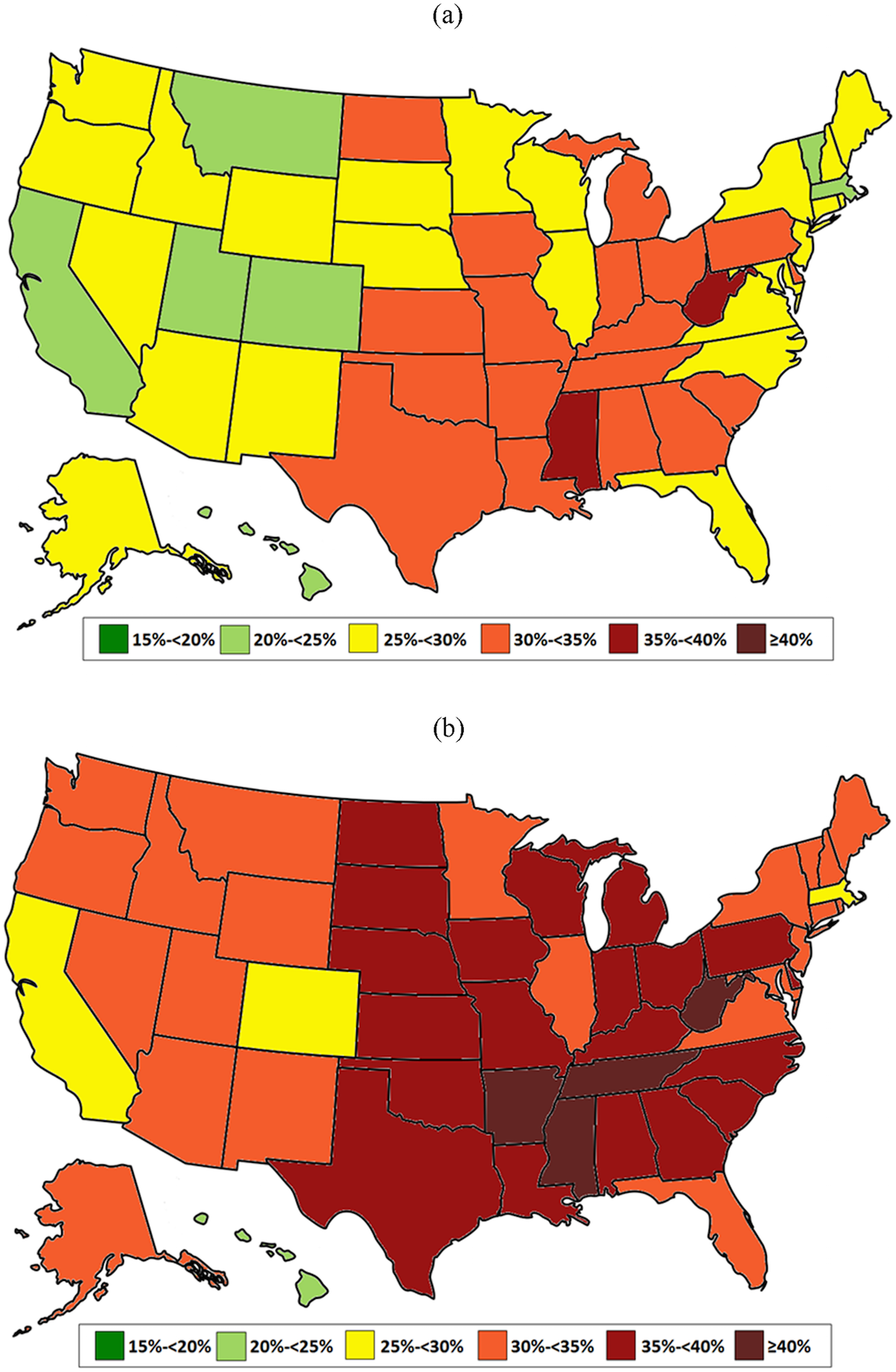Study: More Americans May Be Obese Than We Thought

Original (top) and corrected (bottom) obesity maps. Image via PLOS ONE
To borrow a line from Mark Twain, a new study says reports of American obesity are greatly underestimated.
Researchers from the Harvard T.H. Chan School of Public Health (HSPH) and Columbia University Mailman School of Public Health say the CDC’s 2013 obesity prevalence estimates may be low—by as many as 12 million people.
That’s pretty shocking, as the CDC’s statistics already say 69 million American adults met the medical criteria for obesity, a body mass index of 30 or higher, in 2013. According to HSPH and Columbia, however, the number is closer to 81 million people.
That difference can largely be explained by the CDC’s reliance on self-reported height and weight data, the study says. The researchers used a statistical matching algorithm to compare the self-reported data used by the CDC with measured data collected by the National Health and Nutrition Examination Survey, a method they say is likely to come out with a more accurate number.
In addition to national occurences, the researchers used the algorithm to make new state prevalence maps, and found that only four states—Massachusetts, California, Hawaii, and Colorado—had adult obesity rates below 30 percent. In Arkansas, Mississippi, Tennessee, and West Virginia, they found, more than 40 percent of residents were obese. Those numbers are striking on their own, but even more so when contrasted with the CDC’s figures, which had most states below 30 percent and only two higher than 35 percent obese.
If HSPH and Columbia are correct, even the CDC’s 2014 state prevalence estimates, the most current figures available, are low. That map had 28 states listed at below 30 percent obesity, and none higher than Arkansas’ 35.9 percent obesity rate.
In addition to serving as a rude awakening that obesity in the United States is, somehow, an even bigger problem than we thought, lead author Zach Ward said in a statement that accurate state-level estimates are integral to effective treatment.
“Accurate estimates of state-level obesity are necessary to plan for resources to address this epidemic,” he said. “Our corrected state-level estimates provide decision makers with a more solid foundation of data on which to base obesity prevention policies.”


